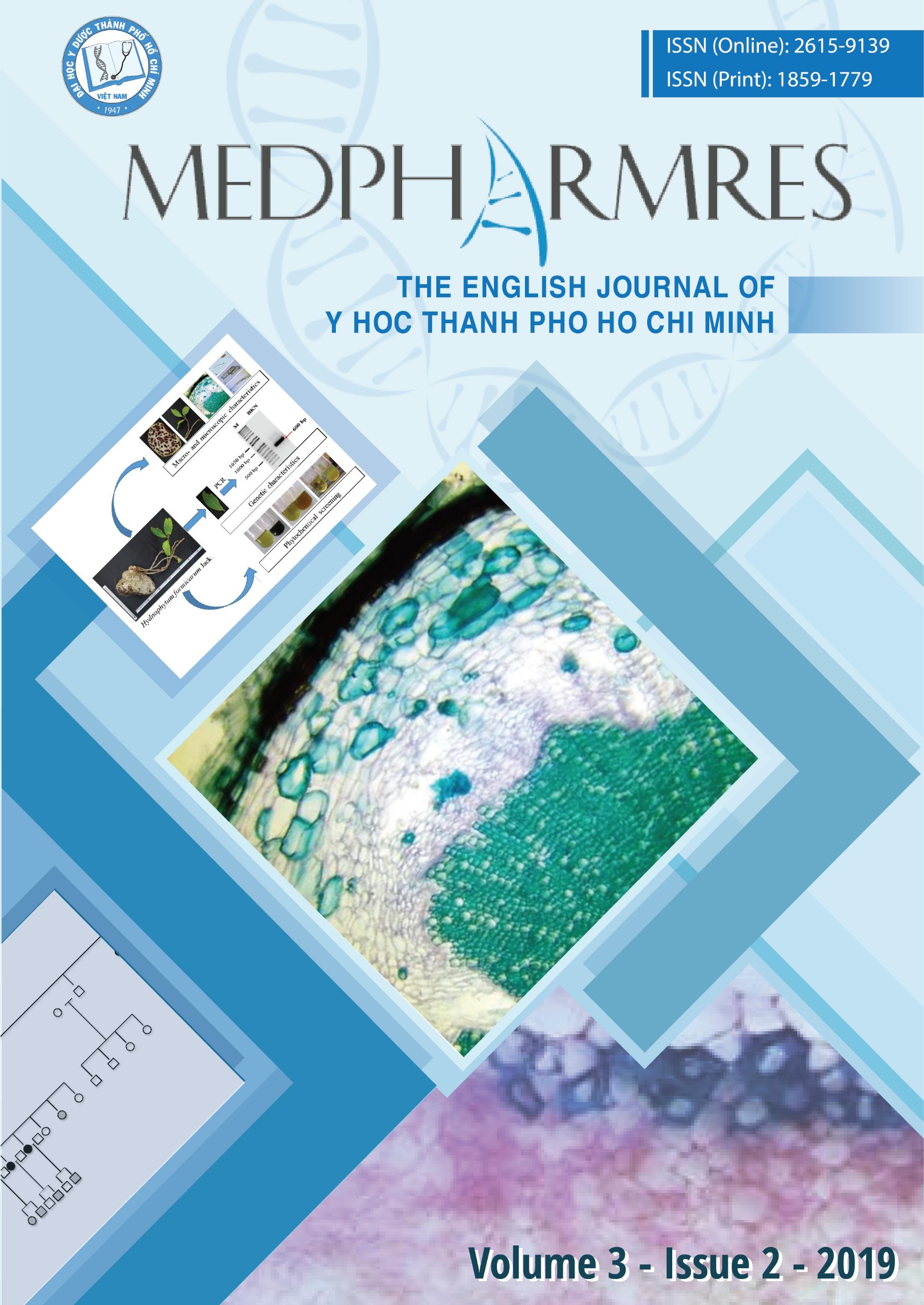Botanical, genetic characteristics and preliminary screening of the phytochemical constituents of Hydnophytum formicarum Jack. in Phu Quoc forest, Vietnam
Tóm tắt
In Vietnamese folk medicine, Bi ky nam (H. formicarum) tuber has been widely used to treat rheumatism, liver and intestinal diseases. This work aimed to study botanical, genetic characteristics and screening of the phytochemical constituents of wild H. formicarum of Phu Quoc Island, Vietnam. Anatomical characteristics of the plant material were described. Fresh leaves were used to analyze DNA barcodes based on rbcL region amplified by PCR. Sequences of DNA products were identified by Sanger method and BioEdit 7.0.5 software, then compared to the control rbcL sequences published in GenBank by BLAST. The tuber powder was studied for pharmacognostic parameters, preliminary phytochemical screening and total phenolic contents by Folin-Ciocalteu method. Results showed that the similarity between the rbcL sequences of H. formicarum leaves collected in Phu Quoc and the control one published in Genbank was 99%. Moisture content, total ash value and acid insoluble ash value of dried tuber powder were 11.06%, 9.60% and 0.70%, respectively. Raw material contained carotenoids, triterpenoids, flavonoids, phenolics, tannins, saponins, reducing substances and amino acids. Total phenolics content was about 58.847 mg pyrrogallol equivalent/g dried powder weight. Our results provided information about botanical, genetic and preliminary phytochemical characteristics of H. formicarum growing on Phu Quoc Island. This could be useful for the authentication of H. formicarum as a medicinal material.
Full text link

